


AZT™ Root Management
Roots perform three essential functions for all landscape trees and shrubs. They extract essential nutrients from the soil, are the point of absorption and conduction of water and they anchor the plant in the ground allowing them to resist the forces of wind, rain and the ever increasing weight and mass of the tree itself. It is easy, given the “out of sight, out of mind” nature of root system to not think critically about root health, vigor and development until they fail. A vigorous, well dispersed root system is critical to the long term growth and survival of any plant but especially trees. Just as we prune the above ground trunks and branches, particular attention must be paid to shaping and fostering a root system that is well distributed, vigorous and, to the extent possibly, free of potentially fatal defects (circling or girdling roots).
Trees in the southwest are sold and priced by container size (15 gallon, 24” box, etc) and specified or described based on their height, width and caliper. Of these criteria, tree caliper is a widely recognized indicator of root mass. It is the best and most visible way to determine if a tree is overgrown or that the structure of the root system has been compromised in the process of growing the tree in the nursery.
In the pursuit of value, the motto “bigger is better” must be carefully applied when purchasing landscape trees. The notion that a large tree growing in a smaller box is a bargain is usually incorrect in the long run. Longevity, growth and vigor of trees depend on a well developed and proportional root system.
Arid Zone Trees (AZT™) employs an assortment of quality checks within our tree production process to insure that the trees we bring to market have sound horticultural qualities, are uniform in appearance, vigorous with proper care following transplanting and an asset to the landscape. The challenges of quality control, when applied to horticultural crops, are unique when compared to those used in traditional manufacturing. Quality is a fairly subjective term and can be applied to appearance, reliability, durability or simply consistency. What makes horticultural "manufacturing" challenging, is that the end products are living plants with each species produced having individual horticultural requirements and unique characteristics.
Bumping is a term commonly used in the nursery trade to describe the practice of moving plants that have reached their optimal growth in one size container and transplanting them into a larger container. Plants left too long in small containers can become overgrown and develop circling or bound roots. Root binding is a horticultural time bomb that if allowed to develop, when trees are young, will severely shorten the life of maturing trees by causing crown girdling or by significantly increasing the risk of wind-throw. Quality control at this level of production involves taking steps to insure that the root system is vigorous, appropriate to the size and stage of development of the tree, and well distributed without being overgrown.
One method for root management uses smaller containers (1, 2, 5 & 15 gallon), that are painted on the inside with a copper based product called “SpinOut” that chemically prunes root tips that come in contact with the sides of the container. http://www.sepro.com/default.php?page=spinout.
Another method involves using specially designed planting containers that have vertical or horizontal ridges or numerous slits or openings around the sides of the containers or both. The openings create dry or air spaces that roots cannot grow across. The resulting drying of the root tip serves to prune the tip and encourages the formation of lateral roots. This process, called air root pruning provided the same results as painting containers with “SpinOut.” The purpose of utilizing a chemical and/or air root pruning is to inhibit circling roots and encourages the development of a more dispersed root system (see photos below).
The “AZT™ Root Management Program” utilizes an assortment of measures and inspections that are, collectively, designed to optimize root development throughout the growing process. Each time trees are bumped the roots are inspected with an eye for a well distributed root mass and a fine net of lateral roots. The technique employed in the “AZT™ Root Management Program” is the use of containers that allow air root pruning that further limits root circling. In addition to the above, prior to bumping, the root mass of each trees is examined and 1/8 to 1/4 of an inch of the rootball is shaved off the outer edge and bottom of the root-ball to further encourage lateral root growth and inhibit circling roots. Once planted into the next larger container or in the landscape these tree roots are better adapted to explore surrounding soil and hastens the establishment of the transplants. Because this practice is so critical to the development of a strong, healthy and well distributed root system it is followed when bumping all sizes of trees (liners to 48" boxes).
The planting soil mix is adjusted to meet the needs of different desert tree species, using a homogeneous blended soil at every stage of tree development. Early in the propagation process (greenhouse) soil mixes are lighter and soil-less. With most species, as trees are planted into larger containers and boxes, an industry standard ratio of native soil and organic material is used to increase the rate of water percolation and root exploration. The results of recent University research strongly cautions against the addition of organic amendments to the backfill soil when transplanting desert tree species. Consequently, we grow our trees in a mixture of native soil and mulch. Our experience has shown that this mixture promotes strong root develop in the nursery and encourages rapid rooting and aids in water penetration when trees are transplanted into the landscape (Arid Zone Times April 2002, "Tree Planting Practices an Overview").
We recognize that in the current environment, with municipalities requesting tree caliper exclusively instead of appropriately matching caliper with box size, it is tempting to look for trees that satisfy caliper requirements at the lowest possible price, (i.e. smallest box size). Any short term savings derived from purchasing overgrown trees with poorly developed or fatally compromised root systems, will ultimately be lost through costs associate with tree replacement (from death or die back caused by girdling roots), damage to the surrounding landscape and structures or injury to pedestrians from wind thrown trees.
Please refer to the published “Arizona Nursery Association Recommended Tree Specification” for appropriate matching of box size to tree caliper, height and width.
Printable PDF file
AZT™ Root Management 2008 highlights the use and success of root pruning containers
Which tree would you plant? One with circling roots and potential future problems, or a tree grown under the AZT™ Root Management Program which greatly reduces the possibility of circling roots!
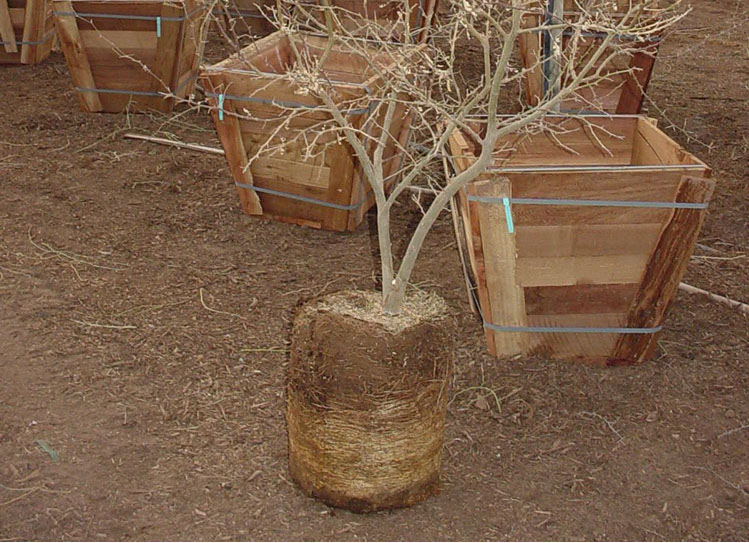
No Root Management Program

With the dense circling mesh of roots, this can be a problem tree in the future.
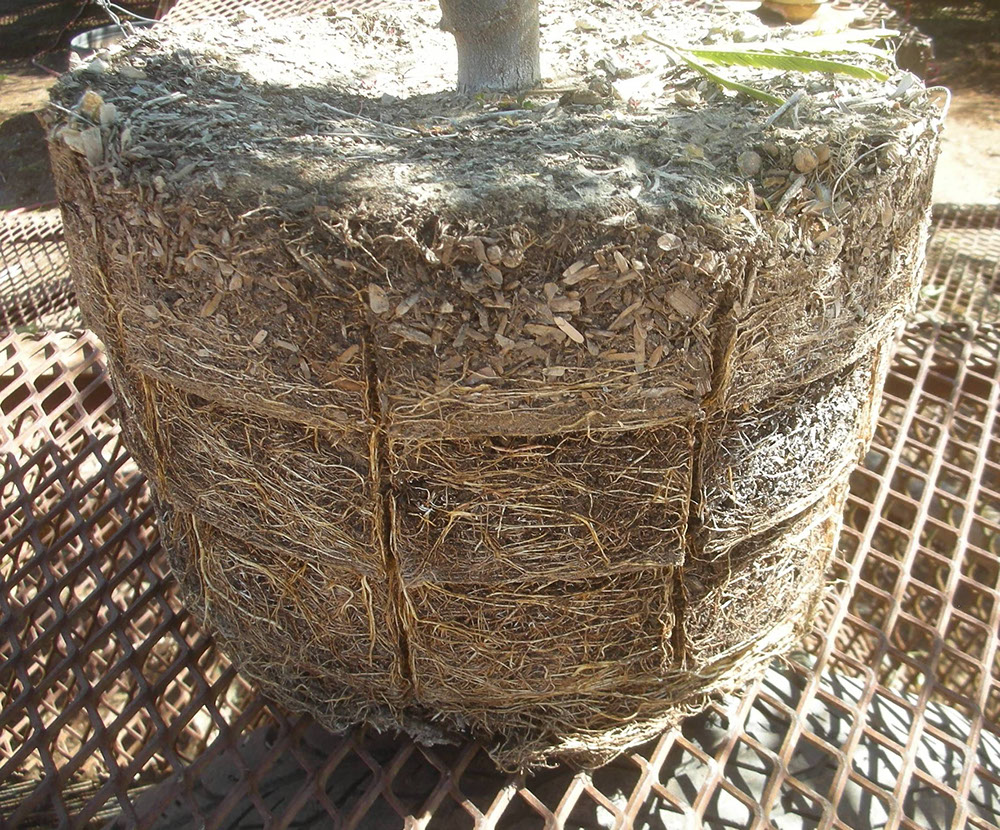
AZT™ Root Management Program Before Root Pruning. Tree rootball pulled out of the air root pruning container. Notice the vertical and horizontal groves from the ridged container and the network of non-circling feeder roots from air root pruning.
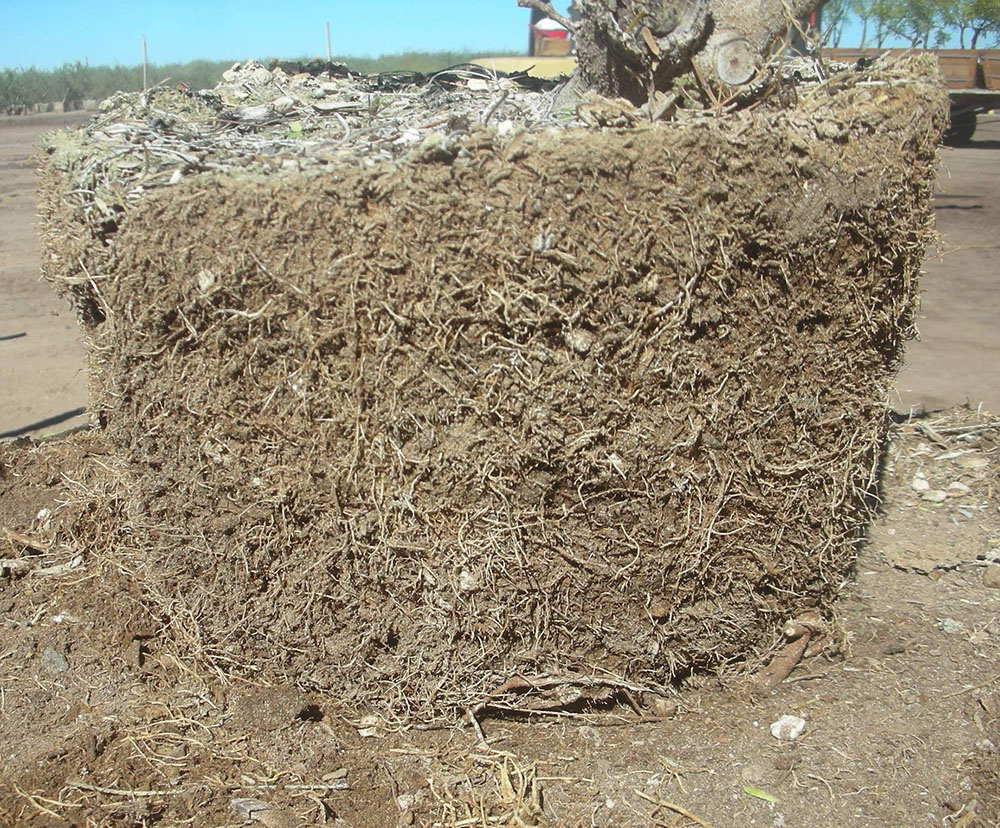
AZT™ Root Management Program After Root Pruning. Root pruning is one more step to reduce the possibility of circling roots and to encourage radiant root growth in the next container size.

Trees are selected for propagation
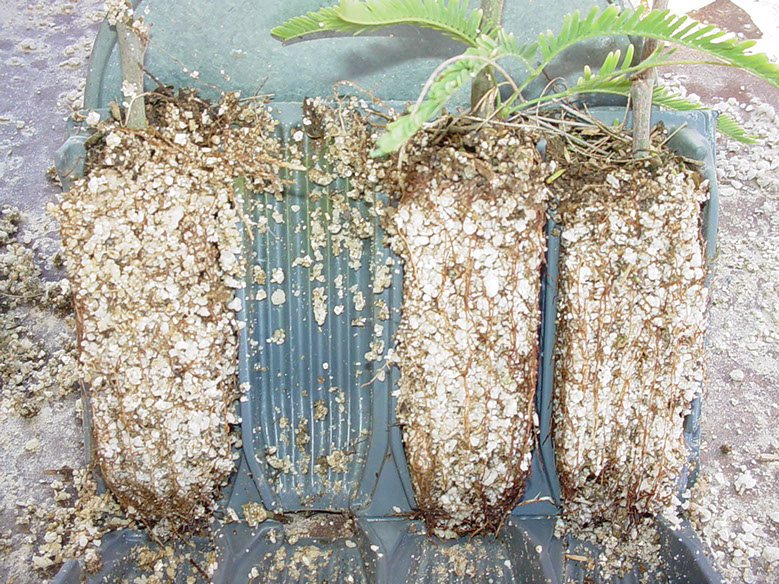
Trees first stage promoting fibrous radial root development
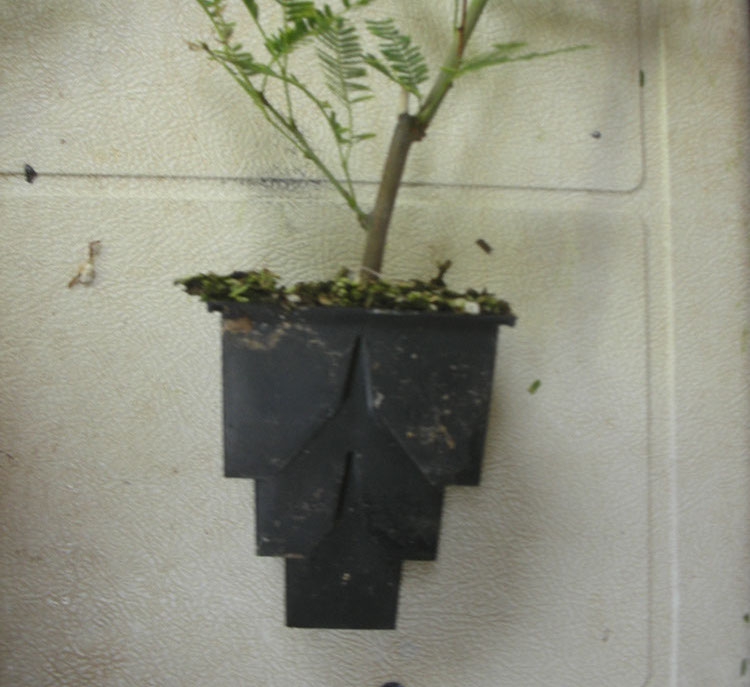
Rooted saplings are transplanted into an air root pruning container

Root mass architecture with a fibrous full branching structure
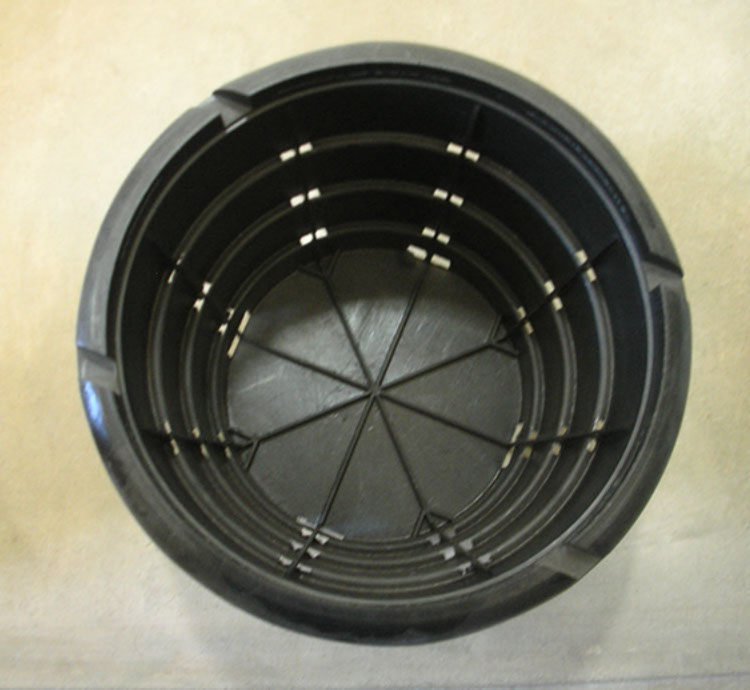
Containers interior ribs with air holes root prune and develop a healthy supportive root structure

Notice the rib marking on root-ball and no circling roots
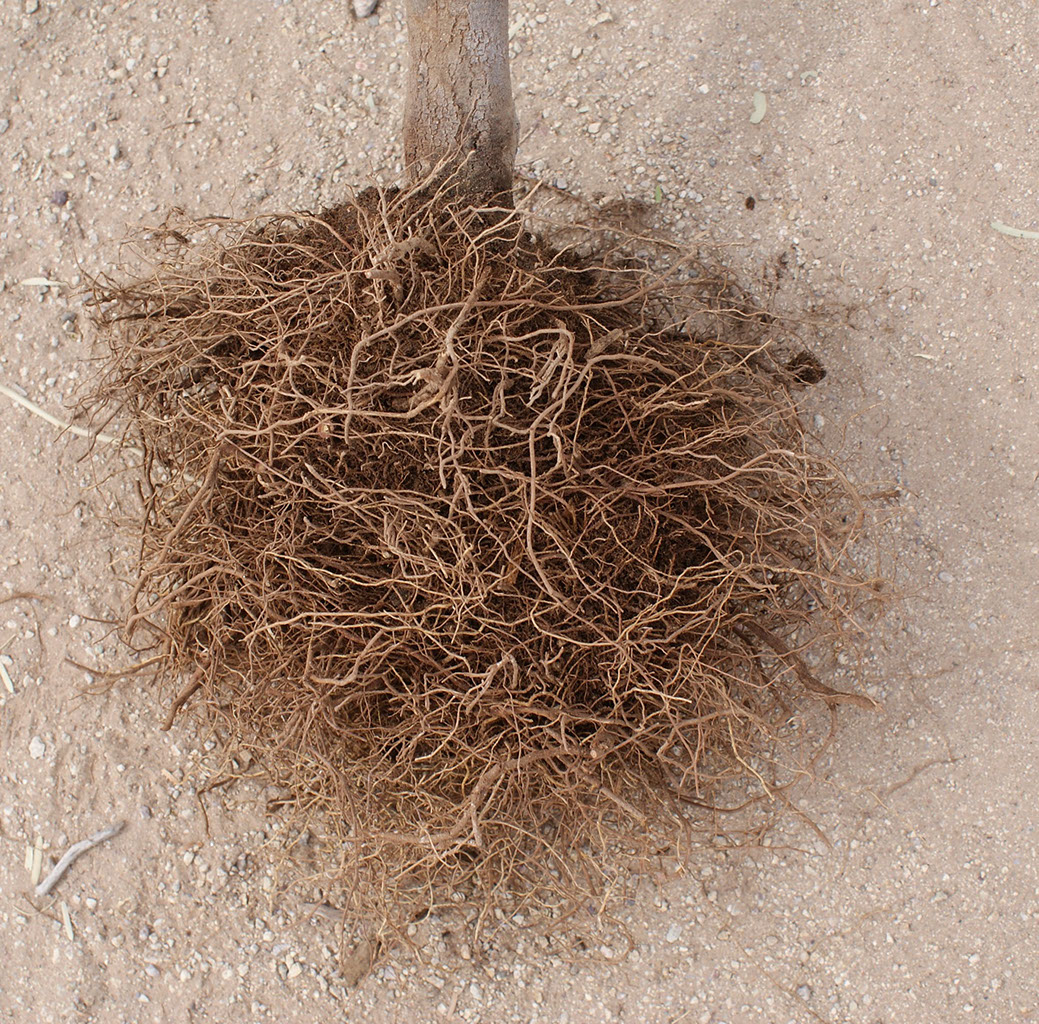
The fibrous root mass will firmly anchor into the next container or landscape soil profile

© Copyright 2000-2020 Arid Zone Trees